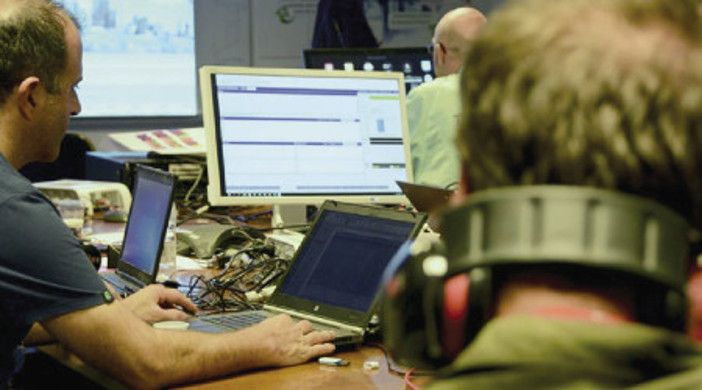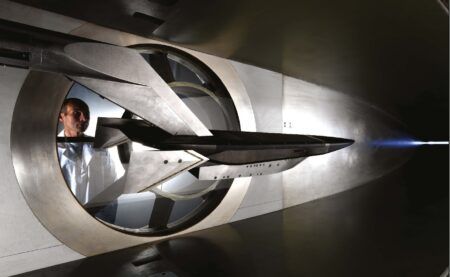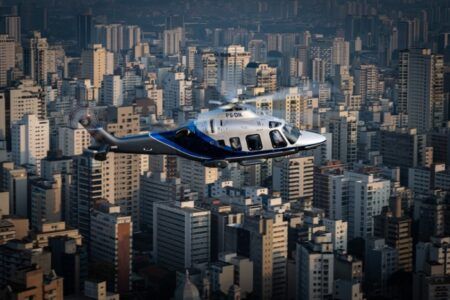The launch of a communication satellite into space is a traumatic event for its parts and pieces. Components are heavily exposed to the eventuality of breakdown or damage, yet engineers need to ensure that the satellite reaches its orbit in faultless operating condition.
Satellite qualification testing is the ultimate step of a satellite development process. This step certifies that every single satellite element will survive the traumatic launch conditions.
Siemens PLM Software is used by space agencies around the world for satellite qualification testing. European satellite and payloads manufacturer, Thales Alenia Space has been partnering with Siemens PLM Software to explore new methods of satellite testing.
Reforming methods
Dynamic environmental testing encompasses a number of essential tests for qualification of space hardware, and acoustic testing is one of those most crucial steps. It subjects an item to intense noise levels while measuring its vibration response. This test is performed on both component (reflectors, solar panels) and system (full satellite) levels.
Satellite acoustic testing is traditionally performed in acoustic reverberant rooms. In most cases, these large facilities are filled with gaseous nitrogen which has a lower sound absorption coefficient than air. The noise is generated by modulators connected to horns placed in the chamber; the result is a noise level that can reach over 150 decibels (dB).
In these facilities, engineers simulate the noise field that excites the satellite in the fairing of the launcher. Siemens’ Simcenter is used for multichannel data acquisition and to control the acoustic signals in the reverberant room.
Acoustic testing in reverberant rooms is a safe, reliable and accurate but its costly and time-consuming. Over the past 15 years, the US space industry has been trying alternative testing methods. Research projects evaluate methods that offer a more economical option as well as more flexibility to perform the tests away from sparse and costly-to-operate facilities.
A Direct Field Acoustic eXcitation (DFAX) method, also named DFAT in the USA, has been developed and is partly used today for qualification of North American satellites. DFAX has lower running costs and initial investment and offers the technical benefit of considerably shorter ramp-up time to level or better controllability in the lower frequency range of 20Hz to 60Hz.
In 2016, the National Aeronautics and Space Agency (NASA) published the NASA Handbook 7010, which is the first handbook that lays out the guidelines for companies wanting to use the new acoustic testing methodology. Like their North American counterparts, leading European industry companies such as Thales Alenia Space are conducting experiments to explore and validate new methods for satellite acoustic testing.
Pump up the volume
What do Werchter, Belgium, Roskilde, Denmark, and Kuru, French Guyana have in common? Werchter and Roskilde are locations of popular open-air rock and pop festivals that bring crowds of passionate music lovers together. Incidentally, in recent years, performances of modern loudspeakers and amplifiers have been pushed to their maximum to better entertain the ever-growing hordes of music fans.
The availability of commercial loudspeakers and amplifiers capable of generating the sound field required in a test has made the development of the direct field acoustic excitation method possible. In a DFAX test, the specimen is placed in the middle of a loudspeaker circle and gets excited by a direct acoustic field. Modern loudspeakers and amplifiers deliver the required high decibels to obtain the target overall sound pressure level (OASPL).
The vibration levels measured on the specimen during the DFAX test are comparable with those measured with reverberant field acoustic excitation. In the near future, satellites that are placed on the European launch pad of Kuru might have been partially qualified using rock concert loudspeakers. DFAX lowers overall test expenses, can be performed almost everywhere and is more flexible with shorter test sequences.
However, safety, reliability and accuracy of the tests should not be discounted. The nature of the sound field in a DFAX test differs from that of a reverberant room test. This difference needs to be accounted for in order to produce realistic test conditions. The engineers of Thales Alenia Space are relentlessly working to improve and validate the DFAX method.
Homogenate the sound field
The engineering team at Thales Alenia Space in Toulouse, France, develops satellite components that will later be integrated in the full system. The company owns an acoustic reverberant room facility. But, this facility is located in Cannes, some 500km from Toulouse.
In practice, this implies that every newly developed component needs to be shipped to Cannes for acoustic qualification testing, leading to additional costs and delays. With the help of Siemens PLM Software engineers, the team developed a new DFAX method that would permit on-site qualification testing of components.
Project “Thunder” has developed a system that generates a 147dB sound field in an ISO 9-rated clean room.
The objective of the project was to reproduce the acoustical environment that a communication satellite is subjected to when placed in the fairing of a satellite launcher. The test setup is designed to generate the high acoustic levels that excite the specimen during takeoff.
The setup is comprised of 96 loudspeakers, stacked in 12 columns and adequately positioned in a circular configuration, and 96 amplifiers that deliver the required high power of 4x5kW. The specimen being tested is placed at the center of the 5m cylinder of loudspeaker columns.
The challenge is to reproduce a uniform diffuse acoustic field around the specimen.
In the test, the team evaluated the behavior of the specimen, making sure that it is equivalent to the one specimen placed in an acoustic reverberant room.
Christophe Fabriès, project leader at Thales Alenia Space said: “The solution uses LMS SCADAS hardware fitted with a multiple inputs multiple outputs controller and combined with LMS Test. Lab software. It requires the measure of 16 microphones positioned around the specimen, analyzes their response and corrects drives.
“The corrected drive values are reinserted in the loudspeakers in order to create an homogenous acoustic field.”
The LMS SCADAS hardware provides the adequate voltage output. Using a closed-loop algorithm, the solution ensures that the output matches the reference profile drive. The method allowed the team to successfully qualify the reflector shell of an antenna subsystem demonstrator.
In the second phase, the team performed qualification tests on the mid-sized platform of a Global Star second generation (GB2) spacecraft mockup. The full qualification sequence was realized according to multilaunchers requirements.
“This phase helped us validate that the testing method is suited for qualification of spacecraft from constellation production lines,” said Fabriès.
“With this method, we are able to conduct up 25 test runs within a test session. It is a very efficient way of testing newly-designed hardware. It will allow us to explore more variants with the possibility of performing immediate validation in the lab.”





